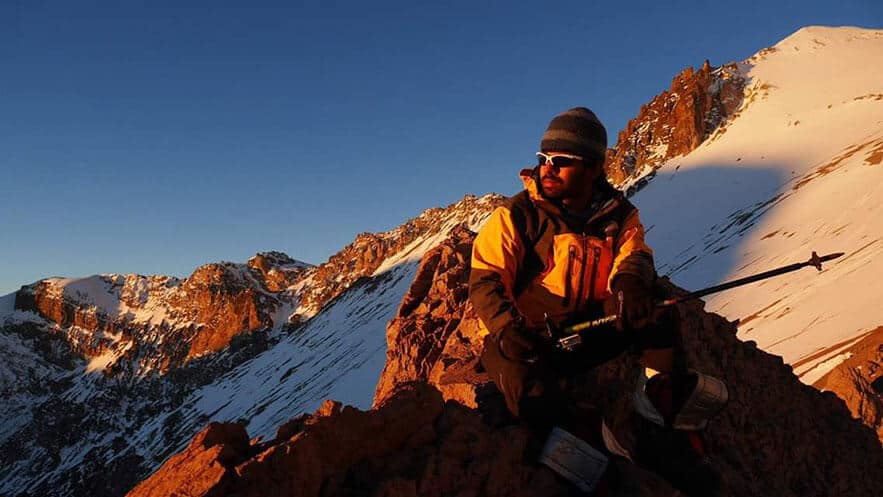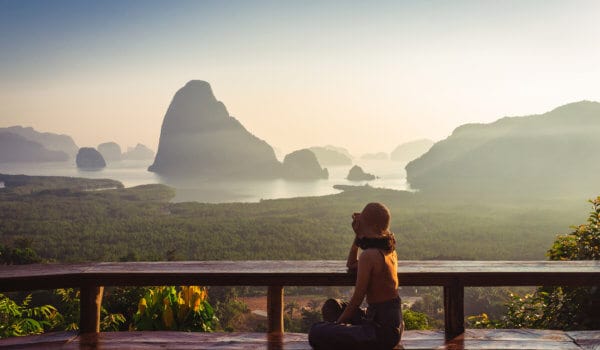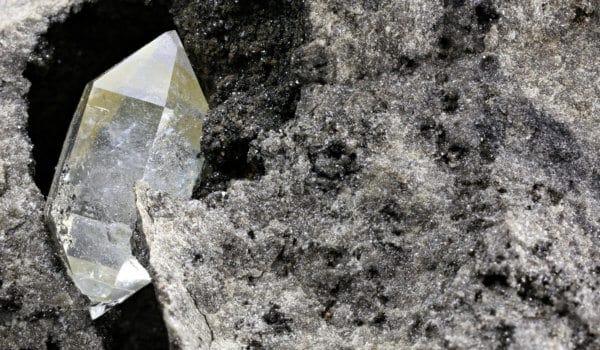Offering different perspectives to different individuals, mountains have always inspired people, either to test their endurance and strength while climbing them or to offer the experience of basking in their beauty while visiting them. To Hemant Gupta, a twenty-nine-year-old metallurgical engineer who has turned mountaineer, they offer a challenge to test his limits and explore his potential apart from fulfilling his new-found passion. Considering himself to be a speck of dust compared to the glory of the mammoth Himalayas, he has found his heart and home in them. Climbing to the summit of Mt. Everest, the highest peak on the planet, at an age of 27 years, Hemant Gupta’s story is that of a trailblazer who has found & nurtured his own passion while helping others achieve theirs.
“Everyone was supportive of my decision to give up my corporate job to pursue what I loved doing.”
What was that moment when you decided to pursue this challenging goal for yourself?
When I joined Tata Steel’s Operations department, I came in touch with the Tata Steel Adventure Foundation (TSAF), which organises expeditions, and I was fortunate to attend a few of their meetings. Those experiences were impactful for me, and after having done a one-month long mountaineering course during college, the interest was rekindled, and with the support of the company’s management, I changed my departmental assignment and moved to TSAF.
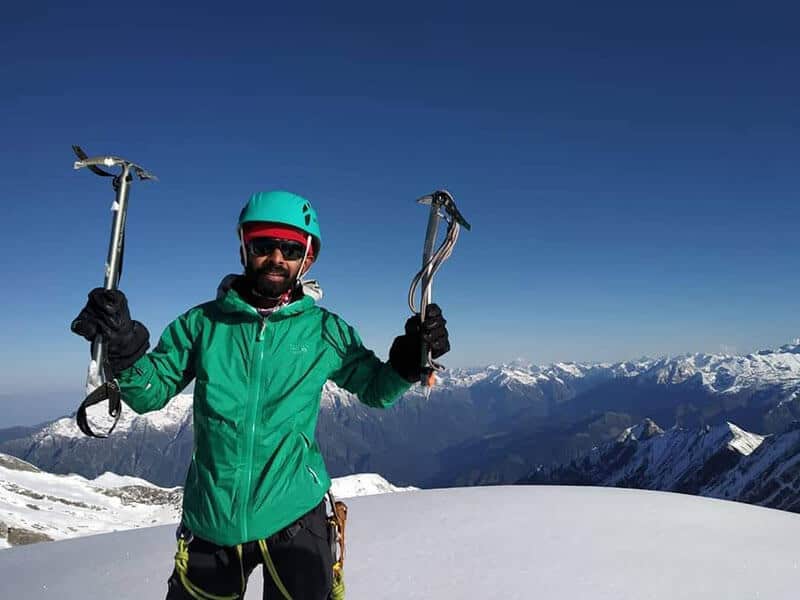
My interaction with Ms Bachendri Pal (the first Indian woman to climb Mt. Everest) who was heading TSAF motivated me greatly to pursue my interest further. She helped me to realise that mountaineering can help me a lot in life. It would help me to develop certain traits like confidence & leadership apart from enjoying the wildness of nature. That was the turning point, and I quickly became passionate about it.
You graduated from IIT (Indian Institute of Technology), one of the most prestigious engineering institutes in India, which is a dream college for most aspiring engineers. You also got recruited into one of the best minerals and metals companies in India, yet you changed your career field. Did you face resistance and opposition from your family, friends and others?
I worked hard to get through the college, but I realised that my passion lay somewhere else. Luckily, everyone was supportive of my decision to give up my corporate job to pursue what I loved doing.
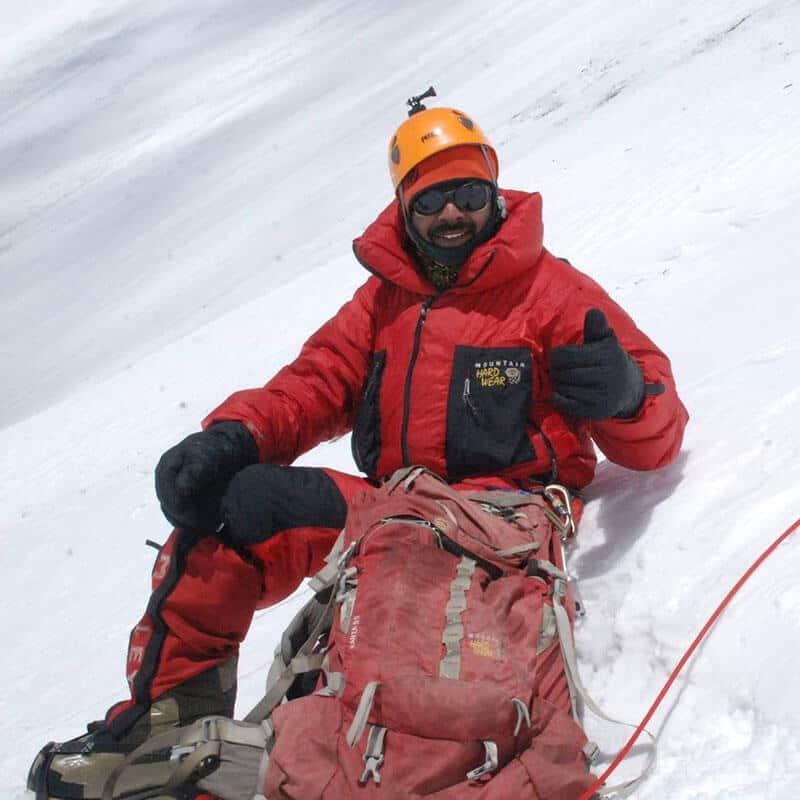
“The final leg entailed walking in snow for more than 35 hours at a stretch and was strenuous.”
Describe how you prepared to climb Mount Everest.
I worked hard through a rigorous training schedule & completed preparatory climbing assignments prior to the actual Everest expedition. Under the able guidance of Ms Pal, who has summited Everest herself, I could prepare myself well physically, mentally and emotionally to take up the challenge.
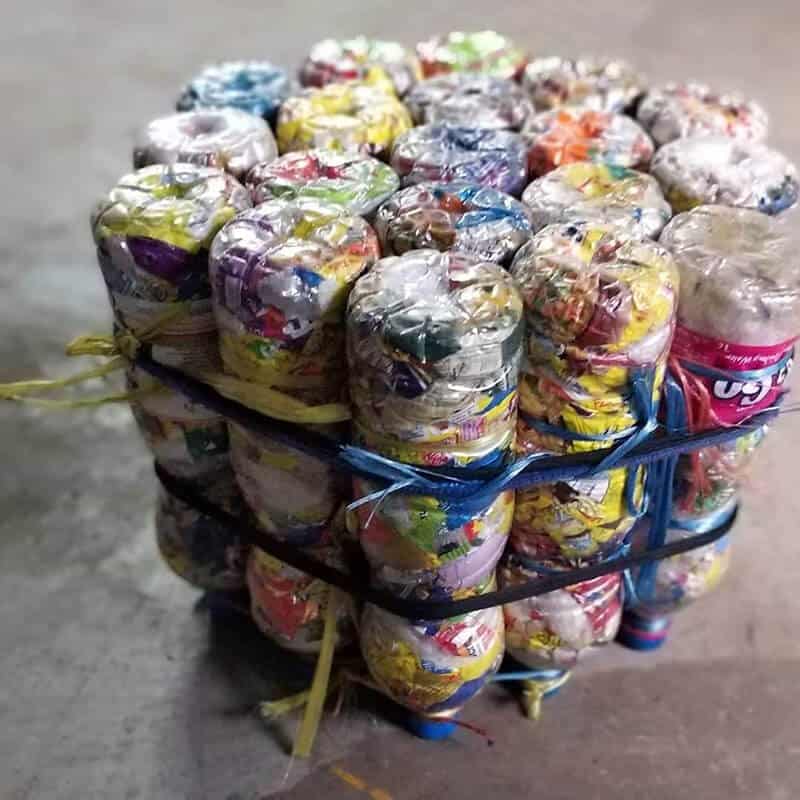
She provided the right training and direction. She pushed us to engage ourselves in all kinds of sports activities like swimming, climbing walls, running and hiking to develop stamina and strength. She gave tips like taking one step at a time, to be alert and never buckle under adverse circumstances. Her knowledge and experience will continue to have a life-long impact on me.
How was your experience while you were atop the highest peak in the world, and what thoughts went through your head?
I was thrilled, anxious, and determined to climb up the peak. There were cold, high winds which make the climb extremely tough despite the acclimatisation. The final leg, which involves going from Camp 2 to the Summit and back, entailed walking in snow for more than 35 hours at a stretch and was strenuous. There are moments when you feel like giving up, but there is a lurking fear of death during those moments, too. Similarly, there were regular incidents of ice falls between camps, which was risky and scary, and one can’t run over there to catch up.
Once you start the ascent, it becomes tougher due to the lack of oxygen and frost-biting cold. Due to my slow speed, I ran out of water. But another expedition member shared his water with me, and I can’t forget the importance of such gestures at those critical times. Without the support of Sherpas and my team-mates, this feat wouldn’t have been possible. My fellow team member supported me emotionally and psychologically. If I had a headache, she would massage my head. These experiences emphasise the importance of collaboration.
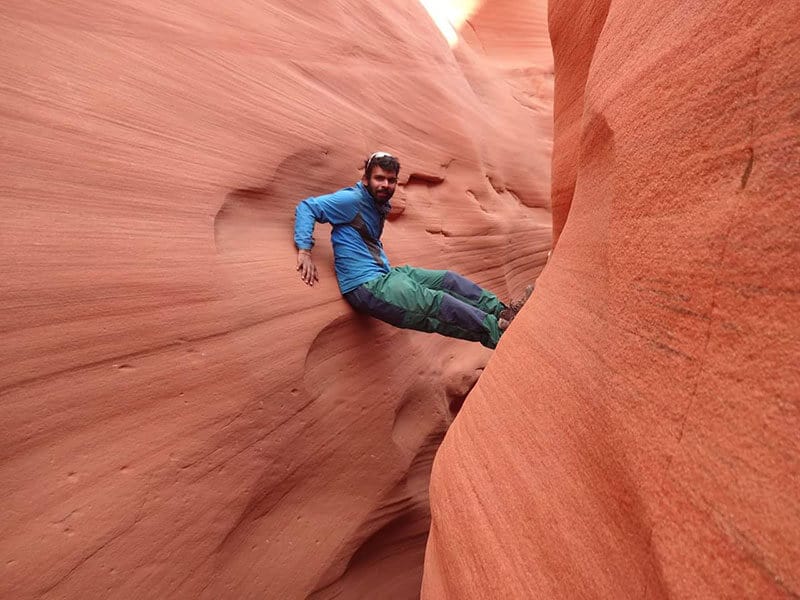
There was a massive earthquake in Nepal in 2015 which caused great devastation, so that was also a worry at the back of my mind.
“To climb the next summit, again you must start from scratch, train well and prepare hard.”
What have you learnt after achieving this brilliant feat in your life?
I have learnt the importance of patience, decision-making, decisiveness, & communication. Although many climbers gave up during the final ascent due to bad weather, I persisted and waited for two days to move ahead. I have also realised the importance of building healthy relationships with people so that teammates could help each other in dire need, and that nature is beautiful and we must work to restore its beauty.
Being at the summit is a very profound experience. It changes a lot inside you, at the same time. You must come down from the summit, you cannot be at the summit throughout your life. To climb the next summit, again you must start from scratch, train well and prepare hard. It’s the same in life. You achieve something, but you have to be ready for the next journey, which may be more difficult and challenging.
Have you climbed any more peaks since Everest?
Yes, the passion continues, so in 2015, I climbed Mt Aconcagua (22860 ft) – the highest peak in the Americas (one of the seven summits), Mt Bhagirathi II (21310 ft) in the Gangotri region, Island Peak (20400ft) in Nepal, Mt Kanamo (19600ft) in Spiti Valley, India and reached up to 21110ft at the Chamser Kangri Peak in Leh, India, all before Mt Everest.
Now, I aim to climb peaks which are technical, more difficult, & open to a self-sufficient style which doesn’t rely on helpers and porters.
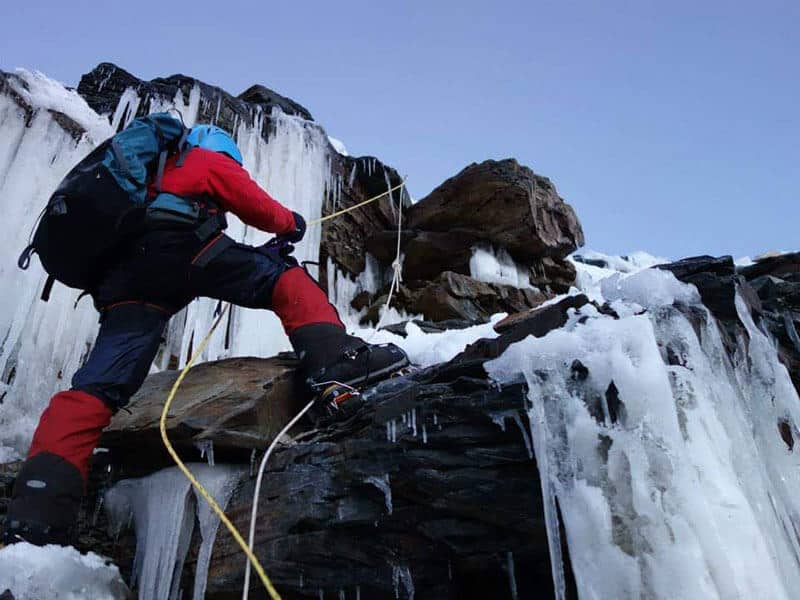
In the winter, we tried a winter ascent of the Stok Kangri (6100 m) peak in the Himalayas, which was an amazing climb but with harsh weather. We had to turn back 60 ft below the summit due to bad weather and avalanche risk. We learned much, however, as our team attempted the climb in Alpine style with no kitchen staff and porters.
In June 2019, I summited Mt Tuliyan peak in Kashmir with the Indian Mountaineering Federation Expedition in Alpine Style. I will be attempting Mt Trishul (712m) in September 2019.
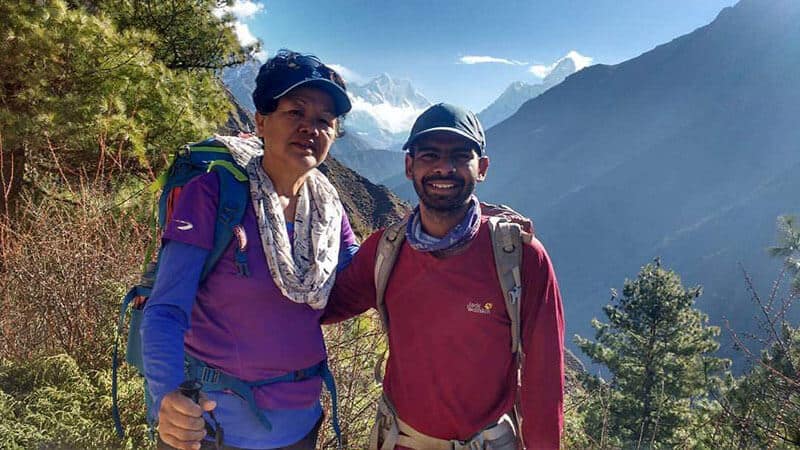
“In our training academy, we have 30 kids. Some come from conservative families. It took us real effort to convince their parents to allow them to pursue their talents.”
You are passionate about climbing and have expressed your desire to preserve the beauty of nature. How are you spreading the message about it to others you come across in expeditions or otherwise during your interactions with aspiring travellers?
I have been working on sustainable trails and camps and expeditions to raise awareness of environment conservation and preservation. When we go mountaineering, we ensure that people are informed and educated about the eco-friendly products and practices that we adopt during our programmes. We not only ensure that we don’t pollute the environment but also collect our waste on our way to the peaks and bring it back to dispose of it responsibly. I am working on plastic pollution awareness too as it is a major trash material that is found everywhere including at Everest base camps.
In 2018, TSAF undertook an initiative to raise public awareness of river pollution in the Ganges, and I was one of the leading members of it. It wasa month-long rafting expedition where a team of 40 individuals traversed 1500 km along the river Ganges in India to clean it. We partnered with the ‘National Mission for a Clean Ganges’ and were endorsed by the Prime Minister of India. We collected 55,000+ kgs of waste from the river and conducted awareness sessions for 60,000+ students and locals, resulting in nationwide coverage in all the leading television news outlets and print and social media.
How are you sharing your knowledge of mountaineering and your experience with other aspiring climbers?
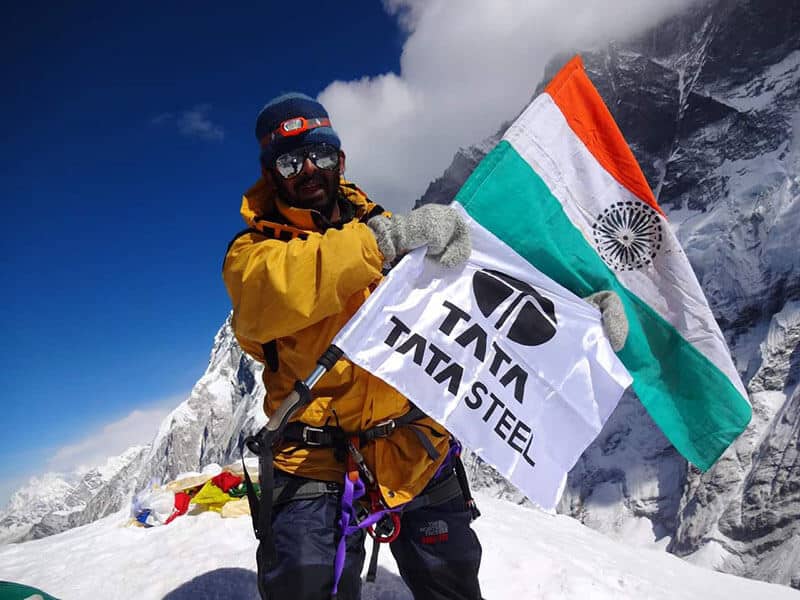
I have introduced new courses and designed courses for the Outdoor Leadership Programme for mountaineering, expeditions etc and helped in the development of a Sport Climbing Centre of Excellence. Many corporate employees, rural youth and nature enthusiasts participate in these programmes. My favorite activities are rock climbing, mountaineering & long distance running, & currently I am immersed in promoting sports climbing among young people, especially those who have the talent but no resources to pursue it.
In the new training academy, we have 30 kids out of whom 5 have represented India at Asian Youth & World Youth Championships since 2016. If you learn about the background of these kids, they come from poor & conservative families. It took us real effort to convince their parents to allow them to pursue their talents. One of the kids has won medals at zonal levels, has gone on to win 3 gold medals at the National Level, has represented India at the Asian Championship and secured 4thposition. With this pace of success, I don’t doubt that one or more of our kids will become National Sportspersons.
Photos: From the archive of Hemant Gupta
Support us!
All your donations will be used to pay the magazine’s journalists and to support the ongoing costs of maintaining the site.
Share this post
Interested in co-operating with us?
We are open to co-operation from writers and businesses alike. You can reach us on our email at [email protected]/[email protected] and we will get back to you as quick as we can.
